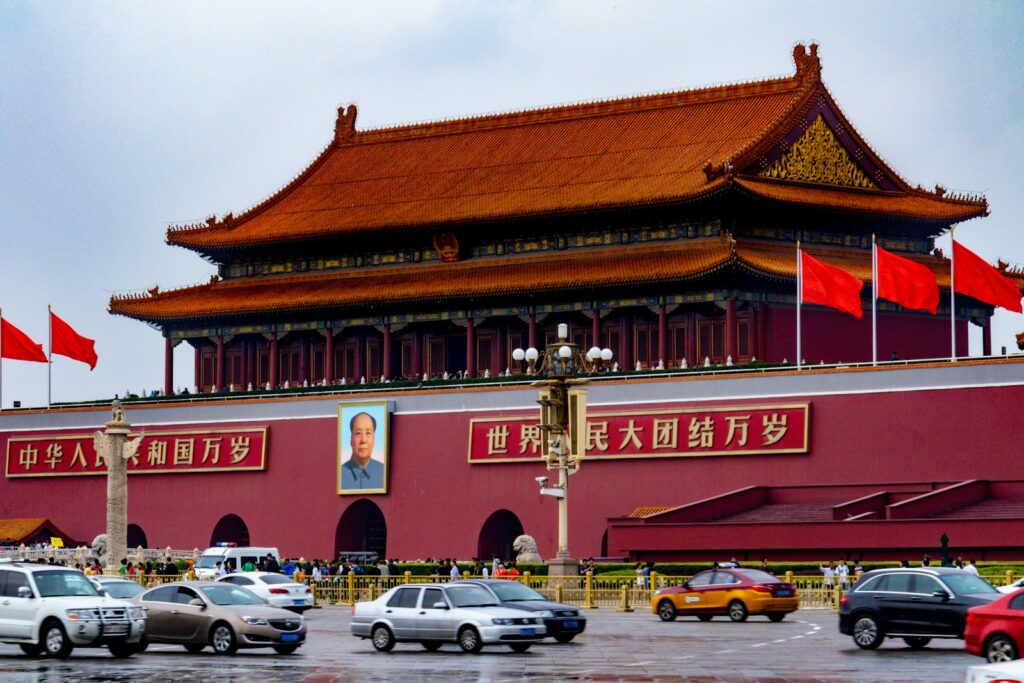
In the annals of global military power, few subjects command as much intrigue and rigorous analysis as the strategic arsenal of the People’s Republic of China. For decades, Beijing’s nuclear capabilities have been shrouded in a veil of state secrecy, fostering an environment where estimates and projections often fill the vacuum left by official discretion. This in-depth examination seeks to shed light on the formidable and evolving nature of China’s most secretive weapons, primarily focusing on its nuclear deterrent, which has grown to become a cornerstone of its national defense and an increasingly influential factor in international geopolitics.
China’s journey to becoming a recognized nuclear power is a complex tapestry woven from Cold War dynamics, geopolitical pressures, and unwavering national determination. From the initial philosophical musings of its leadership to the dramatic breakthroughs in weapons development and the formulation of unique strategic doctrines, the trajectory of its nuclear program reflects a nation determined to secure its sovereignty and project its influence. Understanding this arsenal requires a meticulous review of its historical origins, technological advancements, and the policy decisions that have shaped its current formidable stature.
This article will meticulously dissect various facets of China’s nuclear might, exploring its foundational principles, the critical milestones in its development, and the sophisticated systems designed to deliver its strategic message. Through a detailed analysis of its historical context, strategic policies like ‘no-first-use’ and emerging postures, and the sophisticated platforms that comprise its nuclear triad, we aim to provide a comprehensive and factual account of what is often referred to as ‘The Dragon’s Arsenal.’
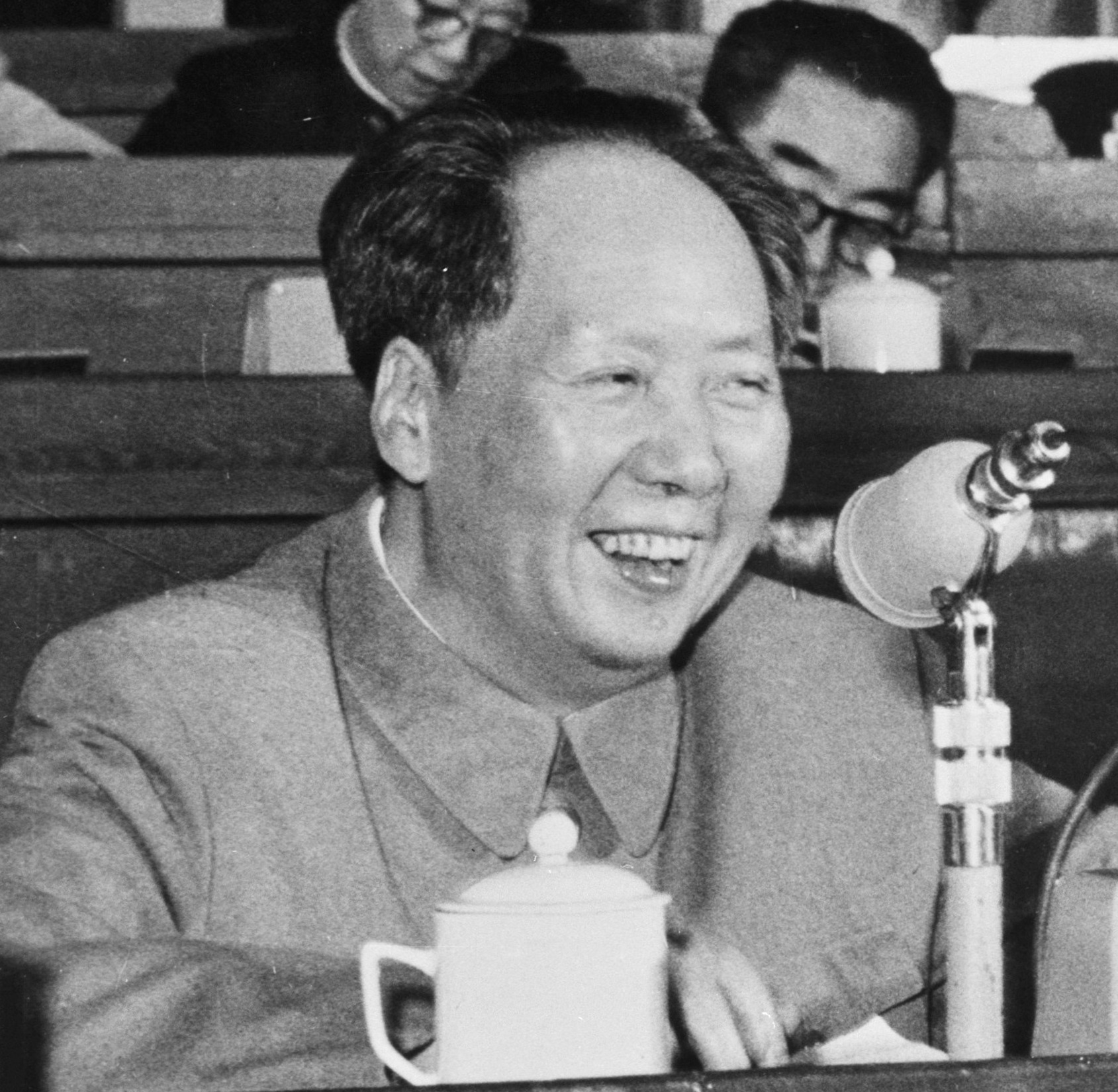
1. **China’s Initial Nuclear Ambitions and Mao’s “Paper Tiger” Doctrine**: The genesis of China’s nuclear ambitions is deeply intertwined with the geopolitical landscape of the mid-20th century and the strategic vision of its revolutionary leader, Mao Zedong. Initially, Mao famously dismissed nuclear weapons as a mere “paper tiger,” a tool used by great powers to intimidate and coerce. In his 1946 comments to American journalist Anne Louise Strong, he stated, “The atom bomb is a paper tiger which the US reactionaries use to scare people. It looks terrible, but in fact it isn’t.” He further elaborated, acknowledging its capacity for “mass slaughter” but asserting that “the outcome of a war is decided by the people, not one or two new types of weapon.”
This initial philosophical stance, while seemingly dismissive, laid a subtle groundwork for China’s future strategic calculus, suggesting that while the weapons themselves might not be decisive, their symbolic power could be potent. The real shift in Mao’s perspective, however, came into sharper focus during the Korean War and particularly the First Taiwan Strait Crisis. The U.S. Eisenhower administration’s “New Look” policy, which viewed nuclear weapons as a “virtually conventional” force and included threats to use them against military targets in Fujian province, served as a stark catalyst.
These direct threats significantly altered China’s strategic outlook, prompting Mao to initiate the nation’s nuclear program. His rationale was unequivocal: “In today’s world, if we don’t want to be bullied by others, we should have atomic weapons by all means.” Mao understood that while matching the vast American nuclear arsenal was an improbable goal, even possessing a limited number of bombs would dramatically enhance China’s diplomatic credibility and its ability to deter potential aggressors. This foundational belief became a driving force for the arduous and ambitious undertaking that followed.
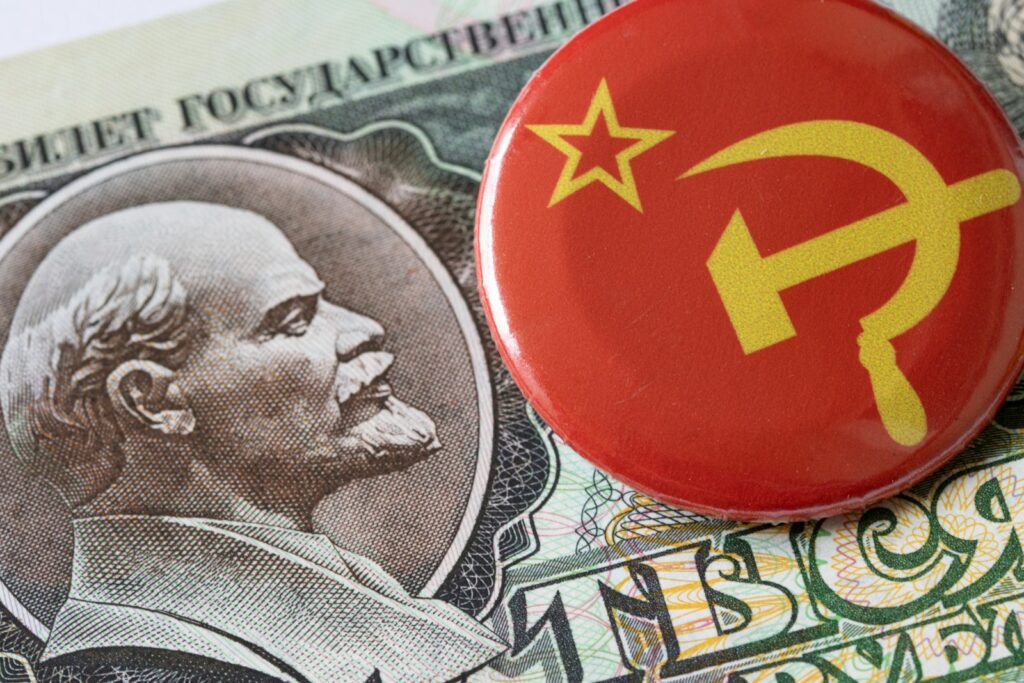
2. **Soviet Cooperation and Subsequent Withdrawal (1950s-1960s)**: China’s nascent nuclear program received crucial early impetus through cooperation with the Soviet Union. This collaboration, rooted in the broader Sino-Soviet alliance of the 1950s, saw Soviet experts begin working with the Chinese on uranium ore exploration as early as July 1954. By 1955, the Soviet Union extended opportunities for Chinese students to study nuclear physics in the USSR and other Warsaw Pact countries, with prominent Chinese scientists like Qian Sanqiang, Jiang Nanxiang, and Yu Wen selecting 350 students for these critical programs.
The deepening partnership led to the signing of several nuclear-related treaties from 1955 onward. A pivotal moment was the conclusion of the “New Defense Technical Accord” in October 1957. This agreement was particularly significant as it promised Soviet support for Chinese development of nuclear weapons, including a model of a Soviet atomic bomb and two R-2 theatre ballistic missiles, marking a substantial transfer of sensitive technology.
With Soviet assistance, China commenced the construction of vital infrastructure for its nuclear ambitions. A uranium refinement plant was initiated in Baotou, an enrichment plant in Lanzhou began development, and work on a plutonium facility in Jiuquan along with the Lop Nur nuclear test site was underway by 1960. Soviet advisers were instrumental in these early stages, particularly in facilities dedicated to fissile material production, with China exporting raw uranium ore to the USSR in return.
However, the relationship began to strain as the Sino-Soviet split widened. In 1958, Soviet leader Nikita Khrushchev’s plans to discuss arms control with the United States and Britain were met with Chinese opposition, reflecting Beijing’s growing divergence from Khrushchev’s post-Stalin policy of peaceful coexistence. Despite Soviet assurances of being under their nuclear umbrella, these disagreements exacerbated tensions.
The cooperation formally ended in June 1959, and by July 1960, all Soviet assistance with the Chinese nuclear program was abruptly terminated, with all Soviet technicians withdrawn. This abrupt departure forced Chinese officials to confront the reality of developing hydrogen bomb technology independently and immediately, a challenge they met with remarkable speed and ingenuity, despite the significant setback.

3. **China’s First Atomic Bomb Test (Code-named 596, 1964)**: Following the dramatic withdrawal of Soviet assistance in 1960, China embarked on an intensive and wholly independent nuclear development program. This period was marked by immense national effort and scientific dedication, driven by the strategic imperative to achieve nuclear deterrence without external support. The international community, particularly the American government under the Kennedy and Johnson administrations, viewed China’s progress with considerable concern.
American officials studied various options to potentially sabotage or attack the Chinese program, even contemplating cooperation with Taiwan or the Soviet Union. However, Soviet leader Khrushchev demonstrated no interest in such propositions, leaving China to pursue its objectives unhindered by direct external military intervention. The relentless efforts of Chinese scientists and engineers culminated in a historic achievement that reshaped global power dynamics.
On October 16, 1964, China conducted its first nuclear test, code-named 596, at the remote Lop Nur test site. This successful detonation instantly elevated China to the status of the fifth nuclear-weapon state, a monumental accomplishment achieved in less than two decades since the founding of the People’s Republic. The test was not merely a scientific triumph but a profound geopolitical statement, demonstrating China’s technological capability and its resolve to stand as an independent power on the world stage.
Premier Zhou Enlai’s announcement of the successful test was accompanied by a critical policy declaration: China committed to a “no-first-use” policy, stating it would “never at any time or under any circumstances be the first to use nuclear weapons.” This commitment, made immediately upon joining the exclusive club of nuclear powers, underscored a defensive posture that would define much of China’s subsequent nuclear doctrine, distinguishing it from other nuclear states that maintained more ambiguous first-use options.
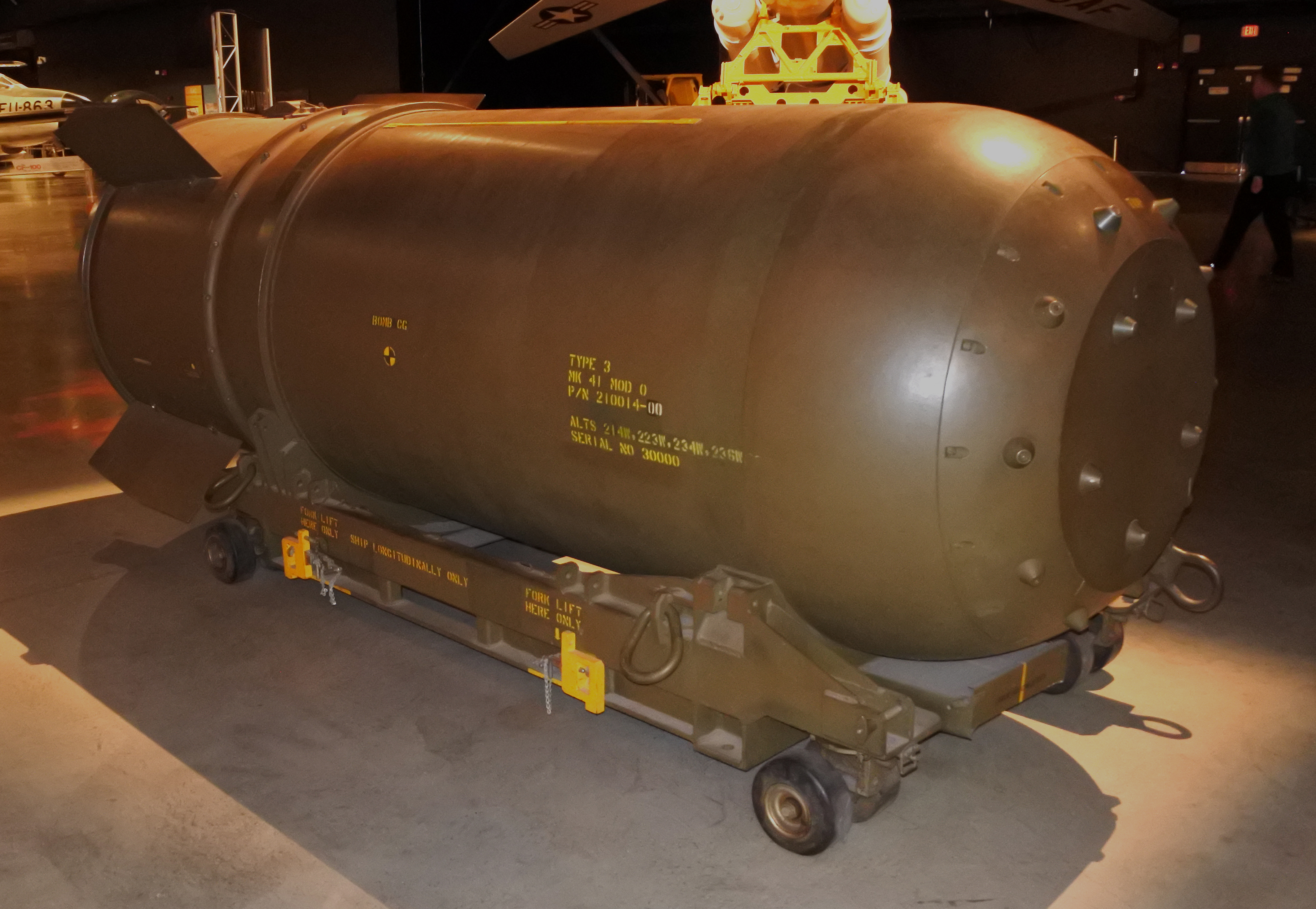
4. **Development of Thermonuclear Weapons**: The successful detonation of its first atomic bomb in 1964 marked the beginning of an even more ambitious phase for China’s nuclear program: the rapid development of thermonuclear weapons, commonly known as hydrogen bombs. Chinese physicists quickly progressed, developing a Teller-Ulam design equivalent for thermonuclear weapons by late 1965, demonstrating an astonishing pace of innovation without external assistance.
This swift advancement was showcased on May 9, 1966, when China carried out the 596L nuclear test. This test involved a layer cake design, which is a type of boosted fission weapon, representing a significant step on the path to a full-fledged hydrogen bomb. The speed and technical sophistication displayed were remarkable, confirming China’s indigenous capabilities in advanced nuclear physics and engineering.
The culmination of these efforts arrived on December 28, 1966, with the first multi-stage thermonuclear weapon test, code-named “629.” This demonstration yielded approximately 120 kilotons, proving China’s mastery of the complex physics required for true hydrogen bomb technology. The progress was continuous and accelerated, surprising many international observers who had underestimated China’s scientific prowess.
Just six months later, on June 17, 1967, China conducted the Project 639 test, which was a full-scale hydrogen bomb detonation with a massive yield of 3.3 megatons. This achievement was not only a significant milestone for China but also meant that it had outpaced the French hydrogen bomb project, which saw its first success in 1968. This rapid transition from an atomic bomb to a hydrogen bomb in just 32 months remains one of the fastest in history.
Following these early successes, China shifted its focus. Beginning with its eighth nuclear test, code-named “524,” at 3 megatons on December 27, 1968, it moved from predominantly highly enriched uranium weapons to plutonium-based designs. Subsequently, the program emphasized weapon miniaturization, a critical step for developing warheads suitable for ballistic missiles and for delivery by fighter aircraft rather than larger bombers, enhancing the flexibility and survivability of its nascent nuclear arsenal.
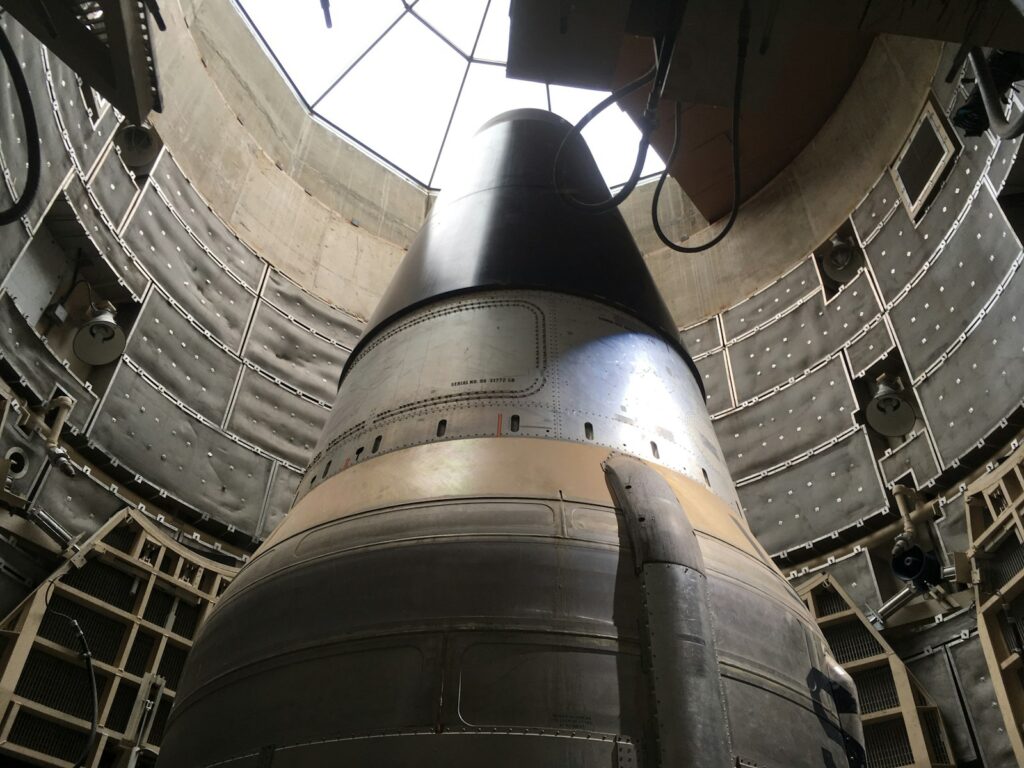
5. **The No-First-Use (NFU) Policy**: From the very moment it achieved nuclear capability in 1964, China adopted a distinctive and principled stance on the use of these formidable weapons: a policy of No-First-Use (NFU). This commitment was explicitly stated following its first test, declaring that China would “never at any time or under any circumstances be the first to use nuclear weapons.” This policy has been a consistent pillar of China’s nuclear doctrine and was reaffirmed in its 2023 national defense policy, continuing through 2025.
The NFU policy is complemented by stringent centralized command and control arrangements for nuclear weapons, designed to ensure that they cannot be employed without direct orders from the highest levels of leadership. This rigorous oversight prevents unauthorized or accidental use and underscores the purely defensive nature of China’s nuclear deterrent. The 1975 General Combat Regulations for a Combined Army further solidified this posture, stipulating that “at any time, under any circumstances, we will absolutely not use nuclear weapons first, only when the enemy uses them first, will we, according to the order of the supreme command, then use this kind of weapon to resolutely counterattack.”
Throughout the Cold War and beyond, China steadfastly maintained its NFU posture. Even when it developed a neutron bomb, it chose not to deploy tactical nuclear weapons on delivery systems like gravity bombs or artillery, which might imply a first-use scenario. Moreover, in peacetime, China has traditionally stored its nuclear warheads separately from their launching systems, adding another layer of control and reinforcing its commitment to NFU.
Despite internal debates among Chinese strategists and civilian experts from 1986 to 1993, and again from 2000 to 2006, the leadership consistently rejected calls to condition or abandon the NFU policy. These debates often touched upon the role of China’s nuclear forces in potential local wars or scenarios like a “Taiwan contingency.” However, Chinese leadership, including Jiang Zemin, affirmed that “We develop strategic nuclear weapons, not in order to attack, but in order to defend. If people don’t attack us, we won’t attack them, but if people attack us, we must attack them.”
This enduring commitment to NFU highlights China’s long-held strategic preference for a secure second-strike capability. By forswearing first use, China aims to deter aggression by promising devastating retaliation, rather than initiating nuclear conflict. This policy has been a defining characteristic of its nuclear posture, influencing both its arsenal development and its international diplomatic engagements.
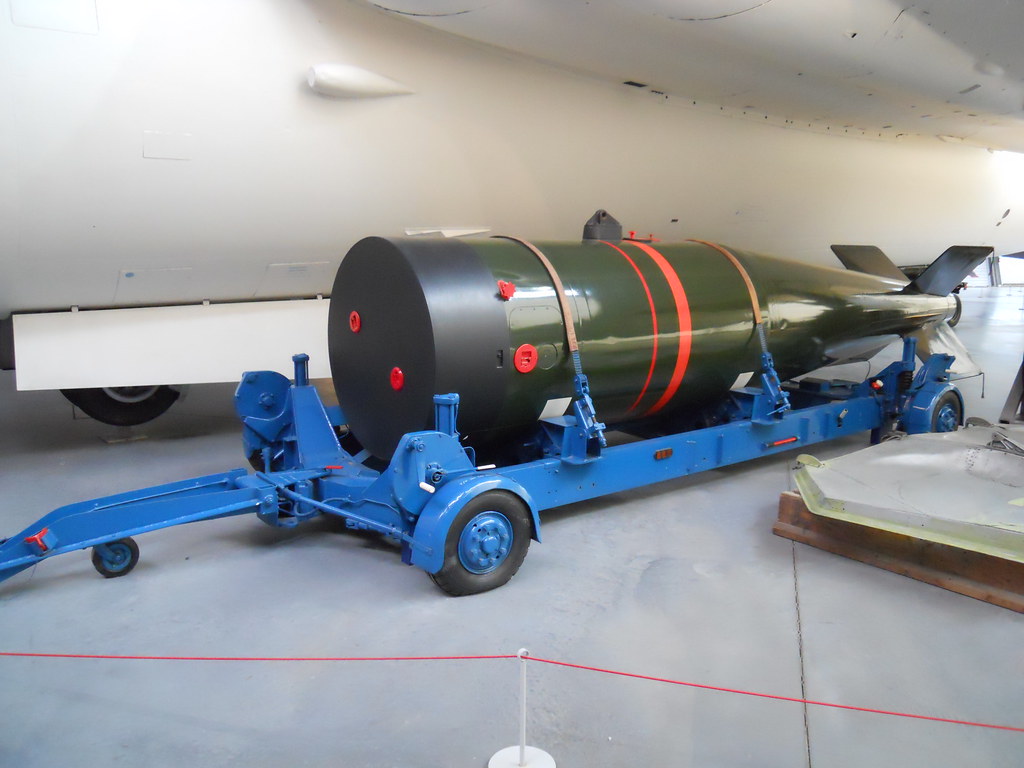
6. **The Evolution of China’s Nuclear Stockpile and Triad**: The exact size of China’s nuclear warhead arsenal remains a tightly guarded state secret, contributing to varying international estimates. However, authoritative sources provide a consistent picture of significant growth. The Bulletin of the Atomic Scientists and the Federation of American Scientists estimated in 2025 that China possesses a stockpile of approximately 600 nuclear warheads, positioning it as the third-largest nuclear power globally. This figure represents a considerable expansion, as the arsenal has reportedly doubled since 2019 alone.
Projections indicate that this rapid growth is set to continue, with estimates suggesting China’s warhead count could reach between 750 and 1,500 by 2035. This makes China the only nuclear weapons state currently undergoing such a significant expansion of its arsenal, contrasting sharply with the more stable or decreasing stockpiles of the United States and Russia. A unique aspect of China’s approach, unlike the U.S. and Russia, is that nearly all its warheads are believed to be stored separately from their delivery systems, a practice that aligns with its traditional no-first-use policy and enhances control.
A pivotal development in China’s strategic capabilities was the establishment of a nuclear triad by 2020. This means China now possesses the ability to deliver nuclear weapons from land-based intercontinental ballistic missiles (ICBMs), sea-based submarine-launched ballistic missiles (SLBMs), and air-launched systems, joining a small group of four other countries operating such a comprehensive deterrent. This triad significantly enhances the survivability and credibility of its retaliatory strike capabilities, as an attack on one leg of the triad would not eliminate its ability to respond.
The estimated assignment of these 600 warheads further illustrates China’s diverse delivery capabilities. Approximately 376 warheads are allocated to its formidable Dongfeng intermediate and intercontinental ballistic missiles, forming the backbone of its land-based deterrent. A further 72 warheads are assigned to Julang-3 submarine-launched ballistic missiles deployed on Type 094 submarines, providing a crucial sea-based second-strike option. Additionally, 20 warheads are earmarked for air-launched ballistic missiles carried by Xi’an H-6N bombers, completing the aerial component. A remaining 132 warheads are currently awaiting assignment, indicating ongoing modernization and expansion efforts.
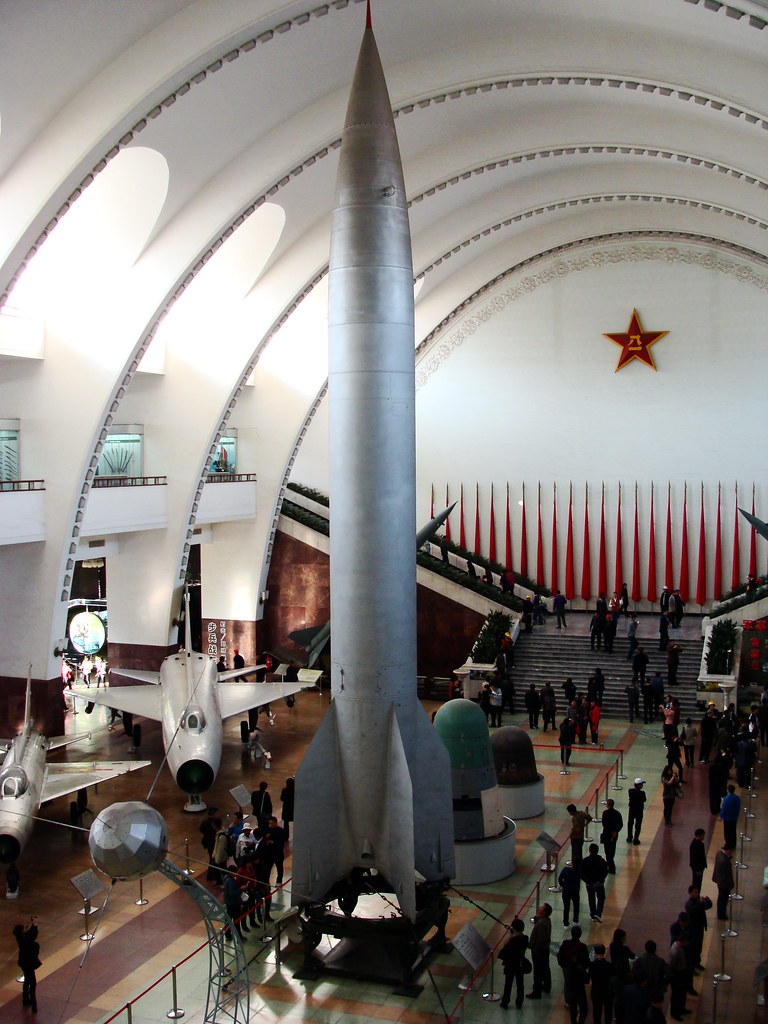
7. **The “Underground Great Wall” and Missile Survivability**: Central to China’s nuclear deterrence strategy, especially during the Cold War and continuing into the present, is the emphasis on ensuring the survivability of its nuclear forces against a potential first strike. One of the most distinctive and widely discussed aspects of this strategy is the utilization of China’s vast geographic area and the construction of extensive underground facilities, often referred to as the “Underground Great Wall of China.” This network of tunnels and hardened silos is a critical component of its retaliatory capabilities.
China leverages its immense territorial depth to disperse its nuclear missile units across a wide area. Missile brigades are strategically located separately from their command bases, creating a distributed and resilient command and control structure. The nuclear forces are commanded by six missile bases, with key locations in Liaoning, Anhui, Yunnan, Hunan, Henan, and Gansu. Notably, the majority of these nuclear forces are concentrated under the command of three missile bases situated in the interior of the country – Hunan, Henan, and Gansu – further enhancing their protection from coastal or border attacks.
The physical infrastructure supporting this dispersal is extraordinary. China has constructed huge tunnel complexes, a labyrinthine network designed to conceal and protect its missiles. In 2009, Chinese media reports, referenced by figures such as U.S. Representative Michael Turner, suggested that this network of tunnels could exceed 5,000 kilometers (approximately 3,110 miles). These tunnels are not merely storage facilities but are actively used for the transport of nuclear weapons and forces, making them incredibly difficult for an adversary to locate and target.
This “underground Great Wall” serves multiple strategic purposes. It complicates an enemy’s targeting efforts by providing concealment and mobility, thereby increasing the confidence in a secure second-strike capability. By making a disarming first strike nearly impossible, China strengthens its deterrence posture. The reliance on concealment and hardened infrastructure was a primary mechanism for survivability during the Cold War.
Since 1996, China has augmented this static protection with increased reliance on the mobility of its land-based nuclear forces. While the tunnels remain crucial, the ability to move missiles and launchers across its vast interior, often on road-mobile platforms, adds another dynamic layer of survivability. This combination of deep concealment and tactical mobility ensures that China’s nuclear arsenal remains a credible and robust deterrent, even in the face of advanced conventional or nuclear threats.
Following a comprehensive review of its foundational nuclear capabilities, the contemporary landscape of China’s strategic arsenal reveals a nation continuously refining its deterrent posture. This includes the modernization of its intercontinental ballistic missile forces, the development of advanced delivery systems, and a nuanced evolution of its strategic doctrines in response to an intricate global security environment. Beijing’s investment in these areas reflects a determination to ensure its nuclear forces remain credible and capable, safeguarding national interests in an increasingly complex world.
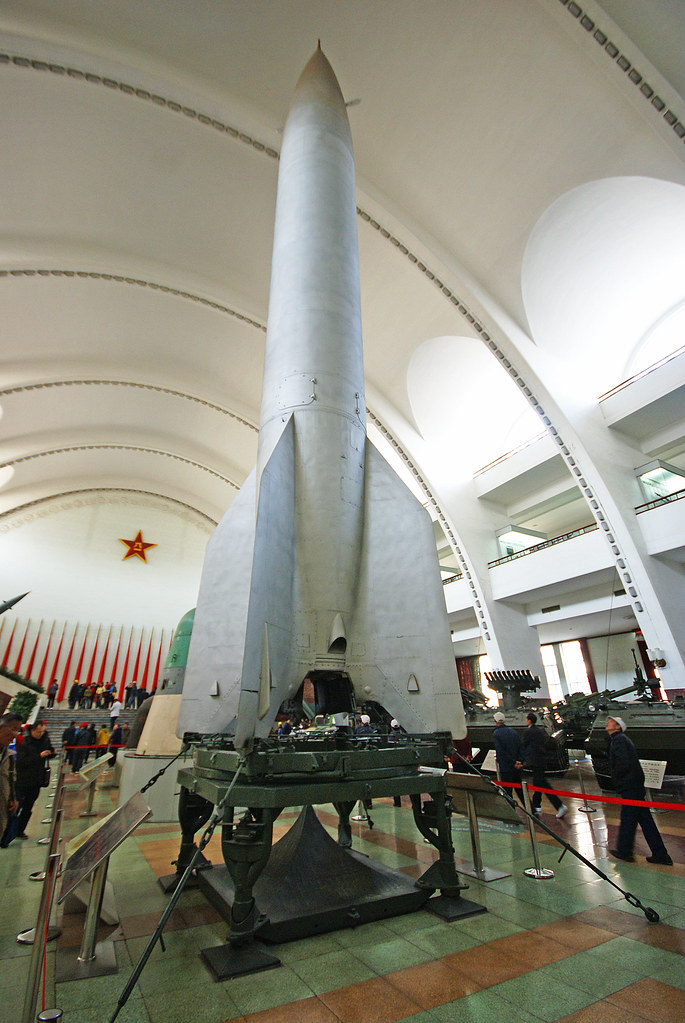
8. **The DF-5A/CSS-4 Mod 2 Intercontinental Ballistic Missile**: The Dongfeng 5 (DF-5), specifically its DF-5A variant, stands as a cornerstone of China’s early land-based intercontinental ballistic missile capabilities. This second-generation, two-stage missile possesses a substantial length of 32.6 meters and a diameter of 3.35 meters, weighing 183,000 kilograms. It is designed to deliver nuclear warheads across vast distances, with an estimated range extending from 13,000 to 16,000 kilometers.
First flown in 1971 and entering operational service a decade later, the DF-5 series has been a critical element of China’s strategic deterrent for decades. However, a notable operational limitation of this missile is the considerable time required for fueling; it takes between 30 and 60 minutes to load with liquid propellants, specifically UDMH and N2O4 oxidizer. This pre-launch preparation period could potentially expose the missile to a preemptive strike, a factor that has driven the development of more responsive systems.
By 2012, plans were in place for the DF-5 to be superseded by the more advanced, solid-fueled DF-41, indicating a broader strategic shift towards quicker deployment capabilities. Despite these modernization efforts, the DF-5 has undergone significant upgrades, notably the DF-5B variant, which is believed to have received a Multiple Independently Targetable Reentry Vehicle (MIRV) upgrade around 2015.
This MIRV capability allows a single missile to carry multiple nuclear warheads, each capable of striking different targets, significantly enhancing its destructive potential and ability to penetrate missile defenses. As Business Insider reported regarding the DF-5B, China now possesses “the ability to deliver nuclear warheads nearly anywhere on earth (outside of South America, at least),” underscoring the formidable reach of this long-serving ICBM.

9. **The DF-41/CSS-X-10 Intercontinental Ballistic Missile** The DF-41 (also known by its NATO reporting name CSS-X-10) represents the vanguard of China’s modern land-based intercontinental ballistic missile technology, widely believed to be fully operational. This missile is a critical component of China’s evolving strategic capabilities, designed to enhance the credibility and survivability of its nuclear deterrent. Its development and deployment signal a qualitative leap in Beijing’s strategic missile forces.
The DF-41 (also known by its NATO reporting name CSS-X-10) represents the vanguard of China’s modern land-based intercontinental ballistic missile technology, widely believed to be fully operational. This missile is a critical component of China’s evolving strategic capabilities, designed to enhance the credibility and survivability of its nuclear deterrent. Its development and deployment signal a qualitative leap in Beijing’s strategic missile forces.
A defining characteristic of the DF-41 is its advanced Multiple Independently Targetable Reentry Vehicle (MIRV) capability. This technological advancement allows the missile to carry and deliver multiple nuclear warheads, each precisely guided to separate targets. The ability to deploy several warheads from a single missile significantly complicates an adversary’s missile defense calculations, as each warhead presents an independent threat that must be intercepted.
The integration of MIRV technology into the DF-41 not only increases the number of targets China can threaten with a single launch but also improves the missile’s penetration capability against increasingly sophisticated missile defense systems. This feature is crucial for maintaining a robust second-strike capability, a cornerstone of China’s nuclear doctrine.
Beyond its payload, the DF-41 is understood to be a road-mobile system, which further enhances its survivability. The ability to move launchers across China’s vast interior, often within its extensive tunnel networks, makes it significantly more challenging for potential adversaries to locate and neutralize these assets in a first strike. This combination of MIRV capability and mobility positions the DF-41 as one of the most formidable elements in China’s strategic arsenal.
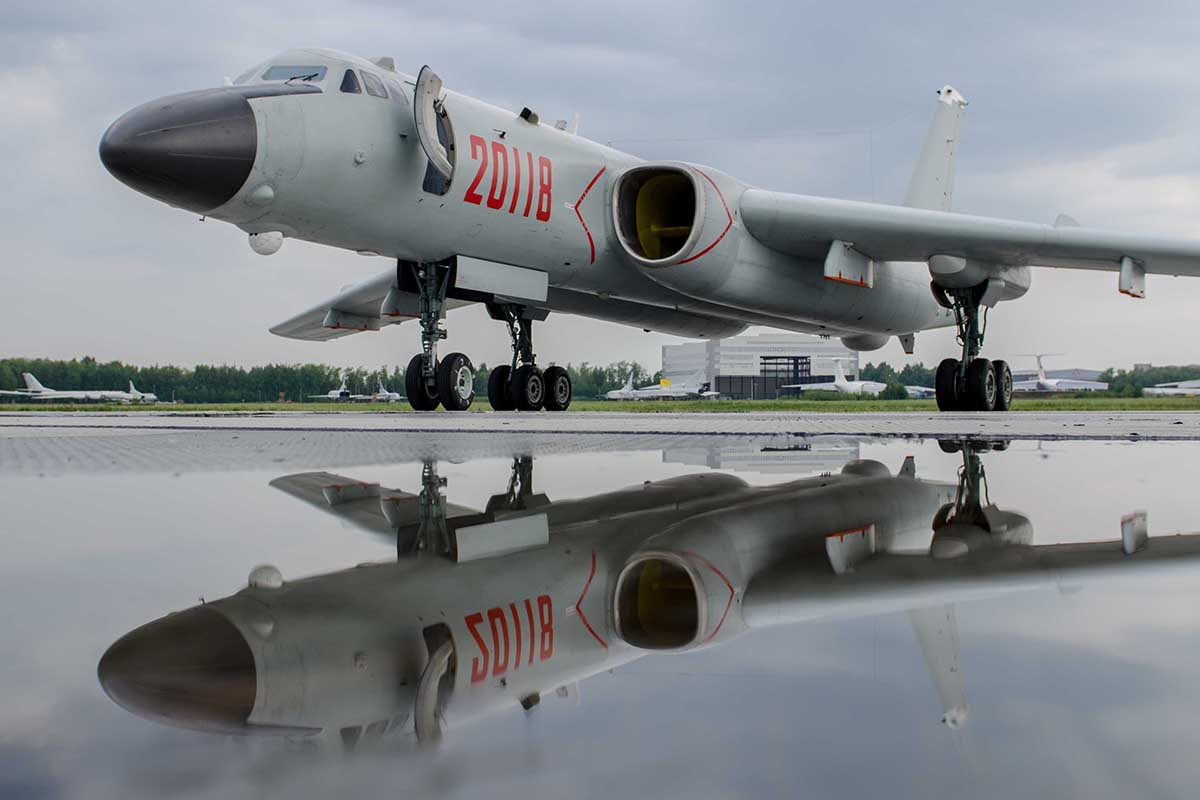
10. **Air-Based Deterrence: H-6N and Xian H-20 Bombers** The aerial component of China’s nuclear triad is undergoing significant modernization, centered around its bomber fleet. Currently, approximately 20 Xi’an H-6N bomber aircraft are assigned to carrying air-launched ballistic missiles, designated by NATO as CH-AS-X-13. The H-6N variant represents a crucial adaptation of the venerable H-6 platform, enabling it to fulfill a strategic role in China’s nuclear deterrence by deploying advanced standoff weapons.
The aerial component of China’s nuclear triad is undergoing significant modernization, centered around its bomber fleet. Currently, approximately 20 Xi’an H-6N bomber aircraft are assigned to carrying air-launched ballistic missiles, designated by NATO as CH-AS-X-13. The H-6N variant represents a crucial adaptation of the venerable H-6 platform, enabling it to fulfill a strategic role in China’s nuclear deterrence by deploying advanced standoff weapons.
The H-6N’s capability to carry air-launched ballistic missiles provides flexibility and extended range for delivering nuclear payloads, allowing it to strike targets from outside the immediate defensive perimeter of an adversary. While the H-6 platform itself is based on older Soviet designs, continuous upgrades and the integration of new weaponry have allowed it to remain a relevant part of China’s strategic force.
Anticipating future requirements, China is also alleged to be testing the Xian H-20, a next-generation stealth technology bomber. This advanced aircraft is intended to succeed the H-6N and is often cited as an analogue to the American Northrop B-2 Spirit and the forthcoming Northrop Grumman B-21 Raider. The development of a stealth bomber underscores China’s ambition to project power over longer distances with enhanced survivability against modern air defense systems.
The H-20 is expected to incorporate cutting-edge stealth features, sophisticated avionics, and a substantial payload capacity. It may also be equipped to carry a new nuclear-armed air-launched cruise missile, which would further diversify China’s air-based nuclear options and enhance its ability to penetrate enemy airspace. The successful deployment of the H-20 would fully establish a modern, credible air leg for China’s nuclear triad, aligning its capabilities with those of other leading nuclear powers.

11. **The Evolving “Launch on Warning” Posture**: While China has historically adhered to a strict No-First-Use (NFU) policy since 1964, recent developments suggest a potential evolution in its strategic posture towards a “launch on warning” (LOW) stance. Reports in the early 2020s indicated that some of China’s nuclear forces might be moving in this direction, a shift that carries significant implications for global strategic stability. This reported change contrasts with its long-standing doctrine and has drawn considerable attention from international defense analysts.
Several factors are believed to be driving this potential strategic re-evaluation. Progress in U.S. missile defense systems, such as the Aegis Ballistic Missile Defense System and Terminal High Altitude Area Defense (THAAD), along with the development of long-range precision strike capabilities like Conventional Prompt Strike, could theoretically decrease the survivability of a Chinese second-strike force under a traditional NFU policy. Additionally, some analysts suggest that American strategy might increasingly rely on nuclear weapons to compensate for the numerical disadvantage of its conventional forces deployed overseas, presenting a further impetus for China to consider a LOW posture.
Despite these reported shifts, internal debates among Chinese strategists and civilian experts continue regarding the merits and drawbacks of adopting a LOW posture, similar to those maintained by Russia and the United States. As of 2023, the bulk of China’s strategic forces had not yet fully transitioned to a LOW posture. Concerns have been raised that a LOW posture, by empowering the People’s Liberation Army (PLA) with compressed decision-making timelines, could potentially degrade the Chinese Communist Party’s (CCP) centralized control over its military, a fundamental principle of China’s nuclear command and control.
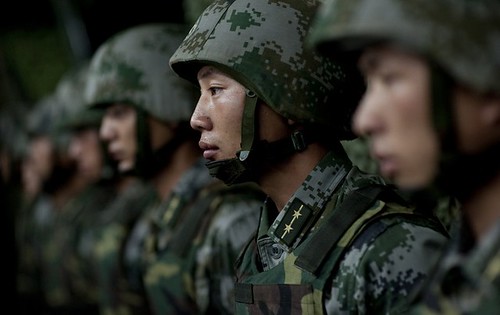
12. **China’s Complex Engagement with Nuclear Non-Proliferation and Arms Control**: China’s engagement with global nuclear non-proliferation treaties and arms control regimes has been a complex and evolving aspect of its foreign policy, reflecting both its historical grievances and its growing stature as a major nuclear power. Before the 1980s, Beijing largely viewed arms control and nuclear non-proliferation frameworks, particularly the Nuclear Non-Proliferation Treaty (NPT), as mechanisms designed by Western powers, especially the United States, to restrain its emergent capabilities. The Chinese government believed that the NPT “served the interests of some States” and unfairly favored countries that already possessed nuclear weapons, considering it an attempt to constrain China rather than the vastly larger arsenals of the U.S. or USSR.
This skeptical stance began to shift under the administration of Deng Xiaoping in the 1980s. While continuing to develop more advanced nuclear technology and weapons, China indicated its willingness to accept the terms of the NPT, ultimately acceding to the treaty in 1992. Since then, China has participated in various multilateral efforts, notably playing an active role in the Six-Party Talks aimed at ending North Korea’s nuclear program in the early 2000s and voting in favor of sanctioning Pyongyang in 2006. It also acceded to the Biological Weapons Convention (BWC) in 1984 and ratified the Chemical Weapons Convention (CWC) in 1997.
Remarkably, the field of nuclear security has emerged as a successful area of U.S.-China cooperation. Precipitated by a 2010 Nuclear Security Summit, both nations launched initiatives to secure potentially dangerous, Chinese-supplied nuclear material in countries like Ghana and Nigeria. These efforts included converting Chinese-origin Miniature Neutron Source Reactors (MNSRs) from highly enriched uranium to low-enriched uranium fuel, enhancing proliferation resistance. In 2009, CCP General Secretary Hu Jintao echoed U.S. President Barack Obama’s calls for a nuclear-free world, signifying a period of alignment on certain non-proliferation goals.
However, China has consistently refused to join trilateral arms reduction talks with the United States and Russia, particularly regarding the extension of their bilateral New START treaty in 2020. Beijing’s steadfast position is that its nuclear warhead arsenal, estimated at around 600, constitutes a small fraction of the U.S. and Russian arsenals. It maintains that its inclusion in such talks is unnecessary and that it will only consider joining when both the U.S. and Russia have significantly reduced their stockpiles to a level comparable to China’s. This stance was reaffirmed in August 2025, when China declined U.S. President Donald Trump’s proposal for disarmament talks, labeling the idea as “neither reasonable nor realistic.”
Furthermore, China, along with all other nuclear weapon states and most NATO members, has chosen not to sign the UN Treaty on the Prohibition of Nuclear Weapons, a binding agreement for the total elimination of nuclear weapons. This complex approach, characterized by adherence to some treaties while resisting others, reflects China’s determination to maintain a strong, modern deterrent while selectively engaging in arms control initiatives. The U.S. has notably refocused its Nuclear Employment Guidance in March 2024, under President Joe Biden, to orient its nuclear deterrence strategy more towards China, indicating that Beijing’s evolving arsenal and policies remain a central consideration in global strategic planning.
China’s strategic arsenal, from its sophisticated delivery systems to its evolving doctrines, underscores a nation committed to safeguarding its sovereignty and projecting its influence in a complex world. The ongoing modernization and expansion of its nuclear capabilities, coupled with its distinctive approach to international arms control, positions China as a pivotal player in the future of global security. The transparency and dialogue around these developments will be crucial for managing international relations in the coming decades.



